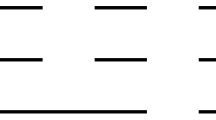Abstract
Let R be a (possibly noncommutative) finite principal ideal ring. Via a total ordering of the ring elements and an ordered basis a lexicographic ordering of the module \(R^n\) is produced. This is used to set up a greedy algorithm that selects vectors for which all linear combinations with the previously selected vectors satisfy a pre-specified selection property and updates the to-be-constructed code to the linear hull of the vectors selected so far. The output is called a lexicode. This process was discussed earlier in the literature for fields and chain rings. In this paper we investigate the properties of such lexicodes over finite principal ideal rings and show that the total ordering of the ring elements has to respect containment of ideals for the algorithm to produce meaningful results. Only then it is guaranteed that the algorithm is exhaustive and thus produces codes that are maximal with respect to inclusion. It is further illustrated that the output of the algorithm heavily depends on the total ordering and chosen basis.
Similar content being viewed by others
Notes
Note that the definition of respectfulness for an ordering is based on principal left ideals. If we simply ignore the non-principal ideal (x, y) and follow Definition 3.1, then any ordering of the form \(0<1<\text {``rest''}\) may be called respectful.
References
Bennenni N., Guenda K., Gulliver T.A.: Greedy construction of DNA codes and new bounds. Preprint 2015. arXiv: 1505.06262 (2015).
Brualdi R., Pless V.: Greedy codes. J. Combin. Theory Ser. A 64, 10–30 (1993).
Canfell M.: Completion of diagrams by automorphisms and Bass’ first stable range condition. J. Algebra 176(2), 480–503 (1995).
Conway J., Sloane N.: Lexicographic codes: error-correcting codes from game theory. IEEE Trans. Inf. Theory 32, 337–348 (1986).
Greferath M., Schmidt S.E.: Finite ring combinatorics and MacWilliams’ Equivalence Theorem. J. Combin. Theory Ser. A 92, 17–28 (2000).
Guenda K., Gulliver T., Sheikholeslam S.: Lexicodes over rings. Des. Codes Cryptogr. 72, 749–763 (2014).
Honold T.: Characterization of finite Frobenius rings. Arch. Math. 76, 406–415 (2001).
Honold T., Landjev I.: Linear codes over finite chain rings. Electron. J. Combin. 7, Research Paper 11, 22 pp (2000)
Honold T., Landjev I.: MacWilliams identities for linear codes over finite Frobenius rings. In: Jungnickel D., Niederreiter H. (eds.) Proceedings of the Fifth International Conference on Finite Fields and Applications Fq5 (Augsburg, 1999), pp. 276–292. Springer, Berlin (2001).
Huffman W.C., Pless V.: Fundamentals of Error-Correcting Codes. Cambridge University Press, Cambridge (2003).
Lam T.Y.: A First Course in Noncommutative Rings. Graduate Text in Mathematics, 2nd edn, vol. 131. Springer, New York (2001).
Lam T.Y.: A crash course on stable range, cancellation, substitution and exchange. J. Algebra Appl. 3(03), 301–343 (2004).
Levenstein V.I.: A class of systematic codes. Dokl. Akad. Nauk SSSR 131(5), 1011–1014. In Russian: Translated in Soviet Math. Dokl. 1, 368–371 (1960).
Milenkovic O., Kashyap N.: On the design of codes for DNA computing. In Coding and Cryptography, pp. 100–119. Springer, Berlin (2006).
Nechaev A.A.: Finite principal ideal rings. Math. USSR Sbornik 20, 364–382 (1973).
Stanley R .P.: Enumerative Combinatorics, vol. I. Cambridge University Press, Cambridge (1997).
Van Zanten A.J.: Lexicographic order and linearity. Des. Codes Cryptogr. 10, 85–97 (1997).
Van Zanten A.J., Suparta I.N.: On the construction of linear \(q\)-ary lexicodes. Des. Codes Cryptogr. 37, 15–29 (2005).
Wood J.A.: Duality for modules over finite rings and applications to coding theory. Am. J. Math. 121, 555–575 (1999).
Acknowledgements
We wish to thank the reviewers for their close reading. In particular the suggestion of how to present selection properties and to rewrite the proofs of Theorems 3.2 and 4.4 has led to a more concise version of the paper. H. Gluesing-Luerssen was partially supported by the National Science Foundation Grant DMS-1210061 and by the Grant #422479 from the Simons Foundation.
Author information
Authors and Affiliations
Corresponding author
Additional information
Communicated by J.-L. Kim.
Rights and permissions
About this article
Cite this article
Antrobus, J., Gluesing-Luerssen, H. Lexicodes over finite principal ideal rings. Des. Codes Cryptogr. 86, 2661–2676 (2018). https://doi.org/10.1007/s10623-018-0469-2
Received:
Revised:
Accepted:
Published:
Issue Date:
DOI: https://doi.org/10.1007/s10623-018-0469-2




